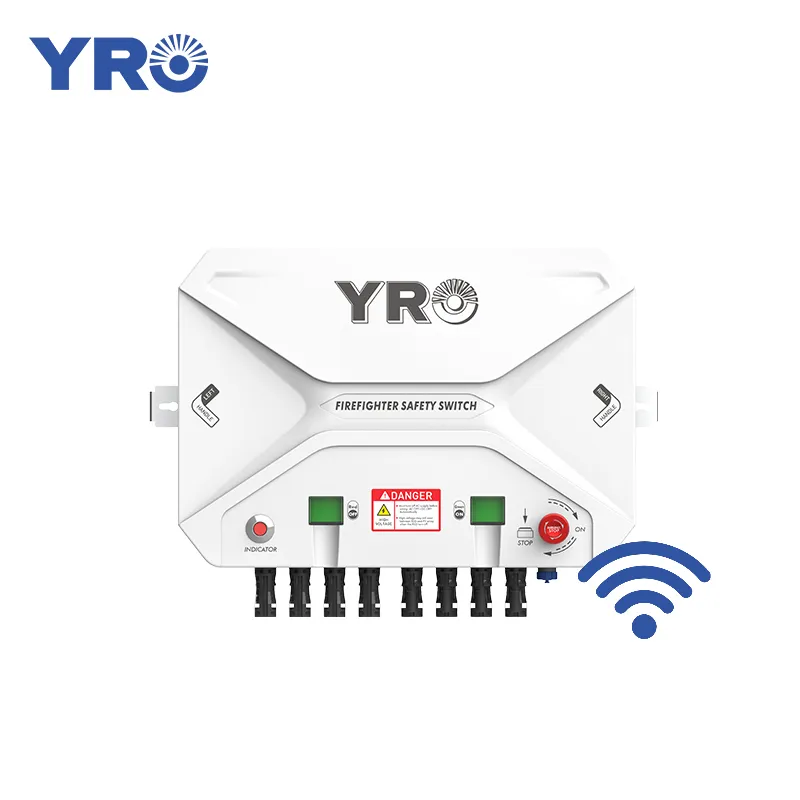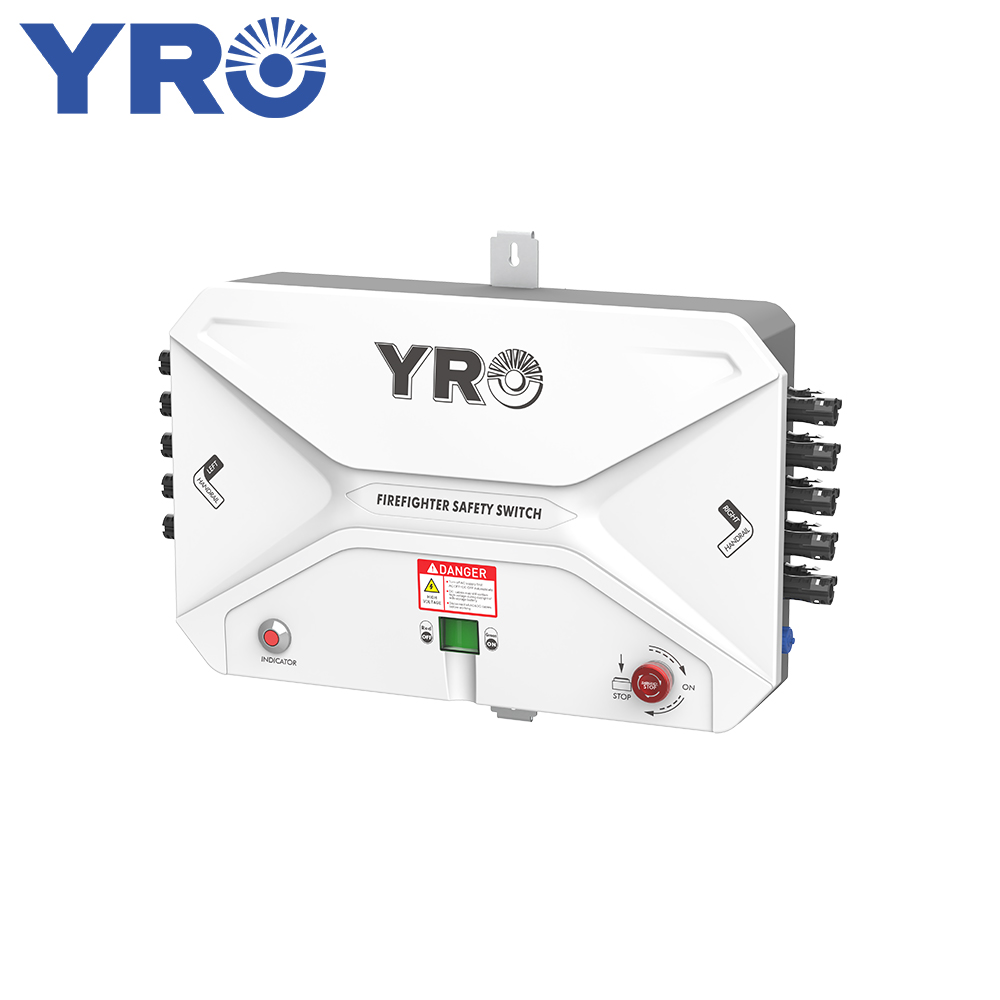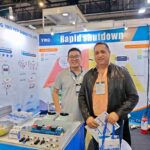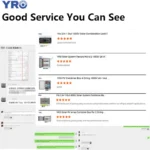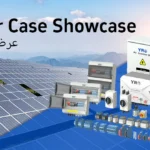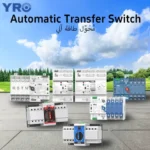As the demand for clean energy grows, solar panel installations continue to expand rapidly across residential, commercial, and industrial sectors. Yet despite the many benefits of photovoltaic (PV) systems, fire hazards remain a valid concern.
Four Primary Causes of Solar Panel Fires
International statistics indicate solar system fires are extremely rare, accounting for less than 1% of total incidents. However, when fires occur, they often spread rapidly, presenting significant firefighting challenges.
 1. DC Isolator Failures
1. DC Isolator Failures
Industry research identifies DC isolator malfunctions as a leading cause of PV system fires. Exposure to extreme weather (particularly rainwater ingress), or installation defects (e.g., improper sealing) frequently triggers electrical short circuits or arc flashes.
2. PV Connector Defects
Connector quality defects are the second major hidden danger, mainly manifested in two types of problems: substandard materials and non-standard installation.
The use of inferior metal contacts or insulating materials with insufficient weather resistance can lead to excessive contact resistance, while installation problems such as inadequate crimping, missing waterproof seals or substandard torque are equally fatal. These defects can cause the temperature at the contact point to rise by more than 120℃, or generate an electric arc with an energy greater than 1000J, eventually igniting the surrounding materials.
3. Inverter Failures
As critical energy conversion components, inverters increasingly contribute to fire incidents through:
- Overloading: Exceeding rated power causing component overheating
- Short circuits: Capacitor/IGBT module breakdown generating extreme heat
- Cooling failures: Faulty fans or inadequate ventilation
- Substandard components: Low-cost capacitors rupturing and igniting enclosures
4. Cable System Hazards
Cable fire is an important type of electrical fire. As the fourth major cause of fire, it mainly results from the aging of photovoltaic cables, insulation damage and installation defects (especially the failure to use dedicated fire-resistant cables).
The high-temperature environment on the roof can significantly accelerate the deterioration of insulating materials. When cables suffer mechanical damage (such as being compressed by brackets or unprotected sharp edge contact), exposed conductors are highly likely to cause grounding faults. More dangerous is the DC arc phenomenon – the high-temperature arc generated when overload current passes through loose connection points, is sufficient to ignite adjacent combustibility.
How to Achieve Active Protection for PV Panels?
Addressing these fire causes requires a solution that eliminates persistent DC voltage at its source. YRO’s solar rapid shutdown device is a high-performance, standards-compliant, reliable, and durable safety solution.
 Advantages of Using RSD for Fire Prevention
Advantages of Using RSD for Fire Prevention
- Complies with NEC Standards: Reduces voltage to <80V within 30 seconds of activation according to NEC 2017/2020 standards
- Continuous Arc Detection: Monitors hazardous current signal characteristics before faults occur; immediately initiates shutdown upon detection
- Enables Safe Firefighter Intervention: After a fire occurs, the rapid shutdown switch automatically activates, ensuring no residual high voltage at the scene and enhancing firefighters’ safety when entering the fireground.
Implementing Effective Rapid Shutdown
Leading fire safety organizations now recognize that properly implemented rapid shutdown systems represent the most effective solution for eliminating firefighter risks.
Select the RSD Standard
- Meet Compliance Requirements
The equipment must comply with the NEC 690.12 standard, ensuring that the voltage is reduced to below 30V and the power is less than 240VA within 10 seconds.
- International Certification
It has certifications such as UL, CE, and TUV, which means it has undergone professional testing and its safety performance is more guaranteed.
- Compatibility with Major Inverter and Module Brands
Choosing general-purpose or RSD models, that have been certified by mainstream inverter manufacturers can reduce compatibility issues and simplify system integration.
- Operating Temperature and Protection Grade Suited for Field Environments
RSD needs to be resistant to high temperatures and damp heat, with a protection level of IP65 or above to ensure stable operation in outdoor or harsh conditions.
Conclusion
Solar panel fires are rare but not impossible. Most incidents are preventable through a combination of high-quality components, professional installation, routine maintenance, and—most importantly—robust emergency shutdown capabilities.
For installers, specifying RSD systems means delivering more than code compliance—it provides lasting risk reduction. For building owners, it ensures their clean energy investment doesn’t introduce new hazards. And for firefighters, it creates the conditions for safer emergency interventions. In the evolving landscape of solar safety, rapid shutdown technology represents not just a device, but a fundamental commitment to responsible energy adoption.
Ready to protect your solar investment? Explore YRO‘s certified rapid shutdown devices and take the first step toward safer, smarter solar systems today.

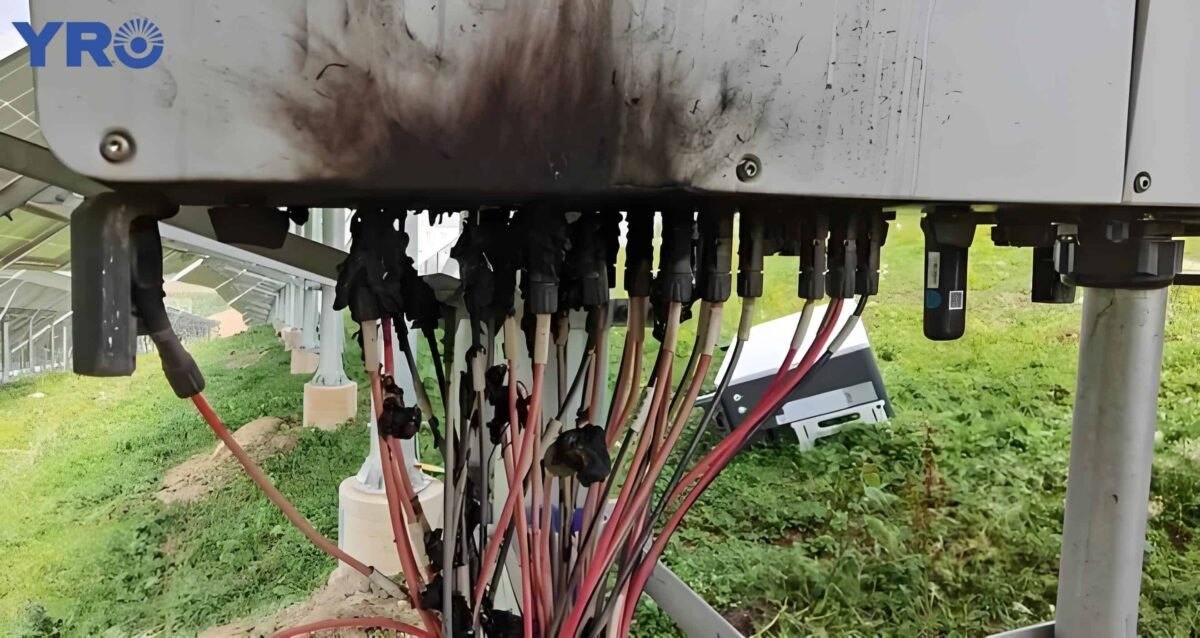 1. DC Isolator Failures
1. DC Isolator Failures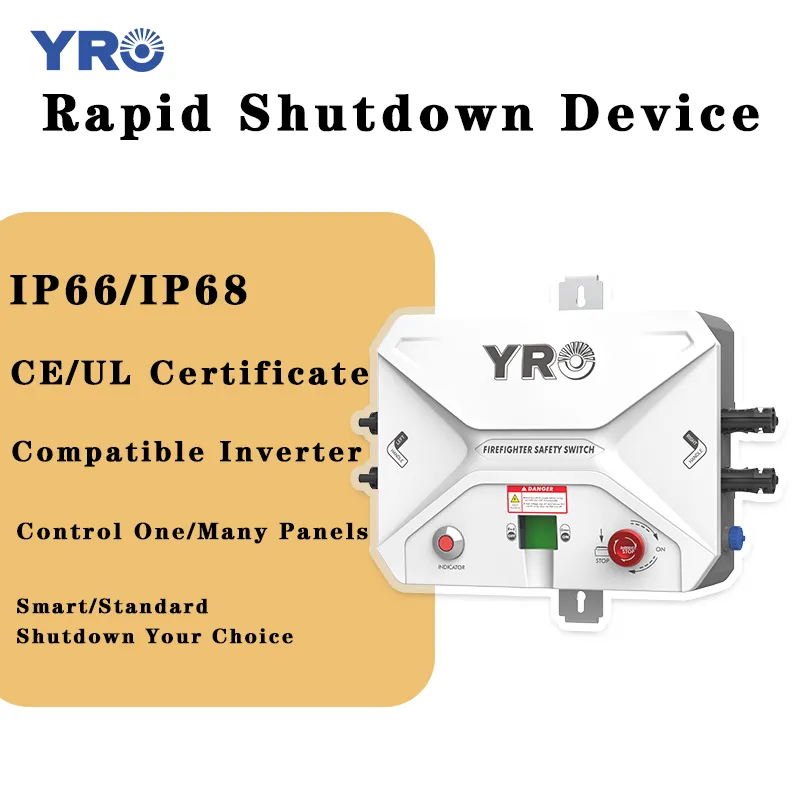 Advantages of Using RSD for Fire Prevention
Advantages of Using RSD for Fire Prevention